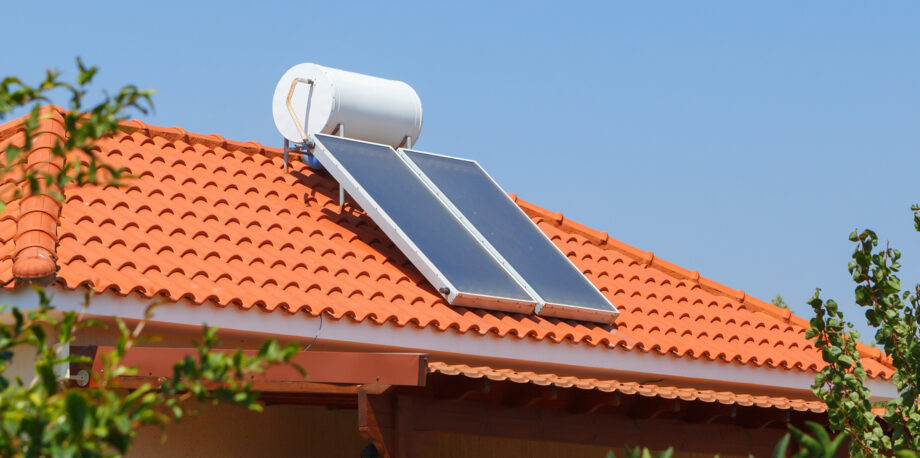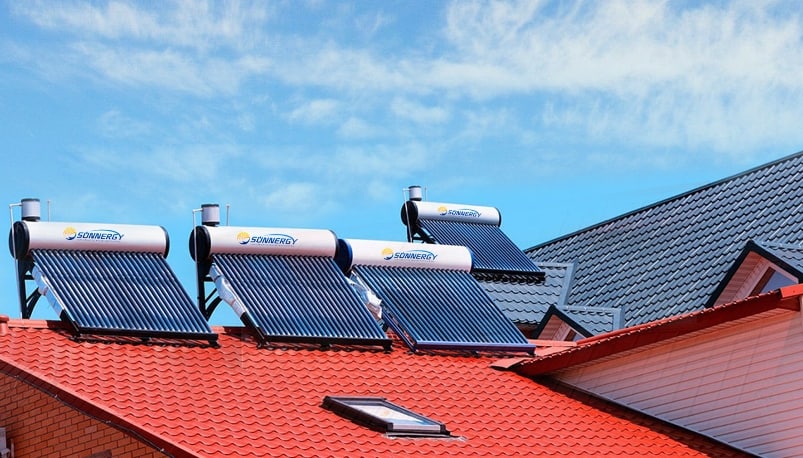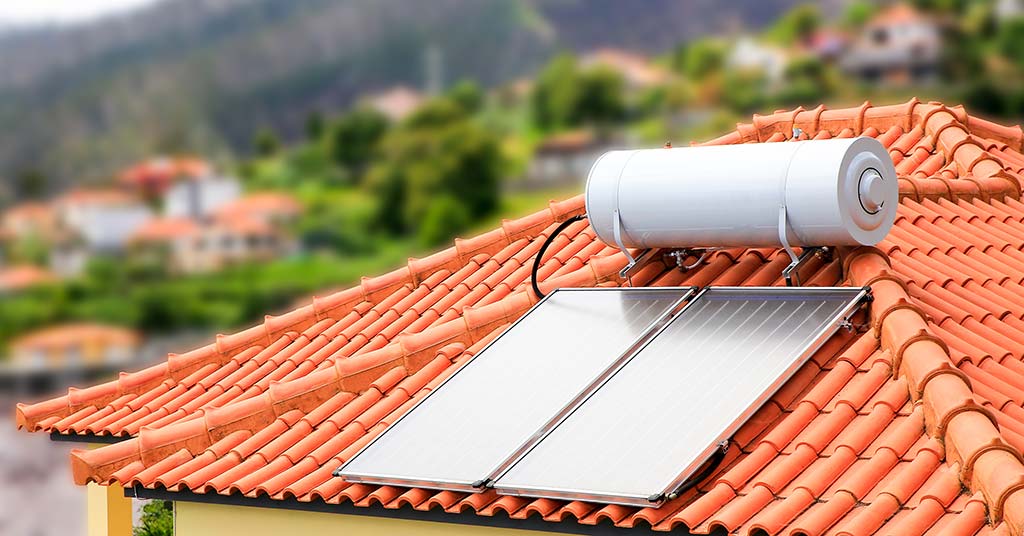
Is Solar Hot Water Worth The Money
Did you know that almost a quarter of your monthly electricity usage is for heating up the water? That means that if you were to find an alternative source of hot water – you would save so much in the long run. One of those alternatives is a solar water heater. It is one of the most popular methods homeowners turn to when they want to cut down on their electricity bill. However, the initial costs of solar water heaters are all but insignificant, which poses the question – is it worth the money? Well, to answer that question, we have to look at the whole picture. So, let’s do that.
What’s A Solar Heater?

As opposed to everyday boilers, the solar water heater doesn’t use electrical energy to provide you with hot showers. Instead of electricity, these appliances work by drawing power from the sun. High-efficiency solar collectors are placed on your roof and that energy is later used to heat up the water in the tank.
These appliances have become really popular in the last few years because of how much they impact your monthly bills. Of course, the fact that the solar panels have dropped in price seemed to help too.
Other than being cost-efficient, these also allow us to use clean, renewable energy. However, solar water heaters aren’t the same as panels, as they do not provide any additional energy to your home.
On that note, people have lately started using electric heat pumps, which use electricity to raise the temperature of the water, but the electricity it’s using is coming from solar panels. A combination of both worlds if you will.
How Does It Work?

There are two options when it comes to the solar water heater for both residential and commercial use – active and passive. Both of these work in different ways and use different equipment, so let’s quickly check them out.
Active SWH
There are two sub-categories to choose from – active direct and active indirect systems.
With active direct systems, water is being heated directly in the collectors, from which it is later on distributed all throughout your home. Collectors are usually glass or metal tubes.
Indirect systems, on the other hand, use heat transferring fluid, which is being warmed up within the solar collectors and is then being transferred through a closed-loop system in order to raise the temperature of the water in the tank.
The active SWH are most commonly used in colder climates where you can benefit from the hot water being stored within a tank. A tank can also be placed inside, instead of on a roof, to prevent freezing in case of sub-zero temperatures.
Passive SWH
Once again, you have two options here – integral collector or passive thermosyphon systems.
Integral collectors are virtually large, black water storage tanks, with an ‘opening’ what allows for sunlight to shine through. Sunlight directly heats up the water in the black tank from which the water flows directly into your plumbing system whenever you need it.
Passive thermosyphon systems work by using metal, plat plate collectors to warm up multiple, small batches (usually 40 gallons) of water. The top batches are the ones that fill up your plumbing system first.
Passive systems rely on convection to move water instead of using pumps, which also makes them a cheaper option compared to the active ones.
What Are Some Of The Most Popular Brands?
With the rise in popularity and technological advancements, more and more companies have decided to start manufacturing SHWs for both residential and commercial use. According to one of the world’s leading experts in the field, LPGS, the best brands you could use would be: Rinani, Thermann, Vulcan, Bosch or Rheem.
How To Choose The Correct System For Your Household?

As we’ve seen, there are several different options as far as different systems go. Every one of them is great in their own sense, but some are just more suitable for certain environments and living conditions. When deciding on an SWH system, consider this.
- Direct active systems are the most suitable for areas where temperatures don’t fall below 0°C. Indirect active systems are better for colder climates.
- If you want to heat up your pool, go with an indirect active system and use the most out of the heating fluid.
- Spacious roof? Use thermosyphon SWH and make the most out of that space.
Other than that, things to consider would be the amount of water you use daily, how much sunlight your house is exposed to and of course, budget.
How Much Does A SWH System Cost?
One of the things that make most people think twice about this system is the price. Setting up a solar water heating system could cost you anywhere from $3000 to $10,000, depending on several different factors. Cost of the installation will vary depending on the system type, equipment and the installation company you end up hiring.
How Much Can You Save?

The key question here is – how much can you actually save if you switch over. That is essentially what this is all about. if it was about being eco-friendly and using renewable energy, we would be talking about the solar panel in general.
So, will you save money? Yes, you certainly will. However, it will take some time. Considering how hefty the initial investment is, it will take some time for an SHW system to cover its cost. From that point on, you’ll basically have free hot water for as long as the system keeps running. So, once you do the math on how much water you spend each month, it should be easy to make a good estimate on how long it will take for the system to pay itself off and start saving you some money.
Is It Worth It?
In a word – yes. Renewable energy is the way to go. These systems last a long time and they require minimal maintenance. If you have the money to cover the initial cost, you should probably make the switch. Ideally, you’d follow the latest trend and just go with a complete solar panel system and enjoy the benefits of the free, clean energy as much as you can.
